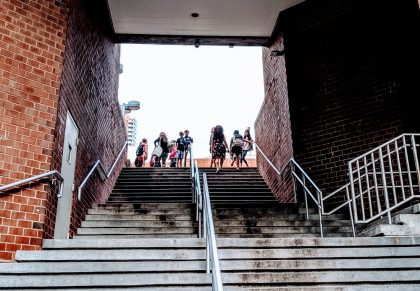What neighborhood schools will look like this fall
ICYMI public schools did not open last week — the mayor has now scheduled the first day of in-person instruction for Monday, Sept. 21, after the teachers union pushed for a delay. (Kids will start remote with partial days on Sept. 16.) And all schools are allowing families to decide between remote or “blended” learning — the latter meaning a combo of both. (As of Sept. 4, the mayor reported that 39 percent of students citywide have chosen to be fully remote.)
When school does start, there will be some serious adjustments even beyond the half weeks. For instance PS 150 has warned parents that a child’s failure or refusal to wear a mask will result in the child’s removal from in-school learning and placement in remote learning. Parents at all schools are expected to take their child’s temperature at home daily and keep them home for temps above 100. And no one other than the kids will be allowed to enter school buildings without an appointment.
But there are some silver linings, believe it or not. Class sizes will be drastically reduced in many cases, an unintended yet positive consequence of the virus that has long been a goal of some public school advocates. And some kids will get to sleep in a bit due to staggered start times.
Here’s an outsiders guide to the general plans:
PS 234
Parents report that the school announced that 17 percent of families will be fully remote at PS 234. The rest will be following the DOE’s “Blended Model 1A,” attending two to three days a week, with students divided into two cohorts. One group will attend Tuesdays and Thursdays, and the second Wednesdays and Fridays, with Mondays alternating between the two. The school has about 640 students and this plan will allow the school to be half empty at all times.
PS 150
PS 150 is also using “Blended Model 1A” with two cohorts coming two to three days per week and third staying home full time. The start time for each grade is staggered, beginning the day with fourth and fifth graders arriving at 8:20 and pre-K and kindergartners arriving by 8:40. Everyone is out of the building by 2. The school has a total of about 190 students, and with all the adjustments made here, average class sizes have been reduced from 29 to 12 for in-person instruction.
STUYVESANT
Many city high schools are offering fully remote or nearly fully remote (ie, one day per week in person) and the last word at Stuy was the leadership there, along with parents and kids, was pushing to keep students home. With 3400 students in a vertical campus, social distancing is not really possible (if you have ever witnessed the escalator scene there, you will know what I mean) but the school now has plans to start in-person classes on schedule with the rest of the DOE.
BMCC
Borough of Manhattan Community College students will for the most part not be returning to campus this fall. Over 98 percent of class sections will be delivered online; and nearly all support services including admissions, advising, tutoring, counseling, career development and the library will also be delivered online.













Between Stuy and BMCC closing, that’s going to deal another blow to the already struggling delis/restaurants/pizzerias and local food trucks that relied not only on the working population but also on the student population at lunch time. The economic hit will force even more closures. And this is really only the beginning. As a community we need to encourage each other to shop locally (and not only at target and whole foods). Don’t rely so much on Fresh Direct and go to the deli’s. Go to the smaller markets. I saw Amish Market had a sign out yesterday that food items and groceries were 50% off. That’s insane!
That’s because they are closing…
just to clarify, stuy has no plans for in classroom learning at this time. they have a choice of fully remote learning or a blended program where students can sit in the cafeteria or auditorium two days a week with a laptop and connect remotely from there. this was necessitated because 80% of the stuy teachers requested an exemption from classroom teaching.